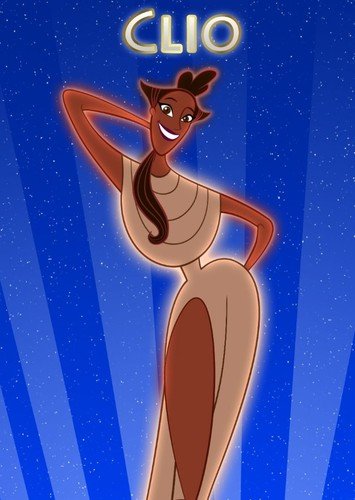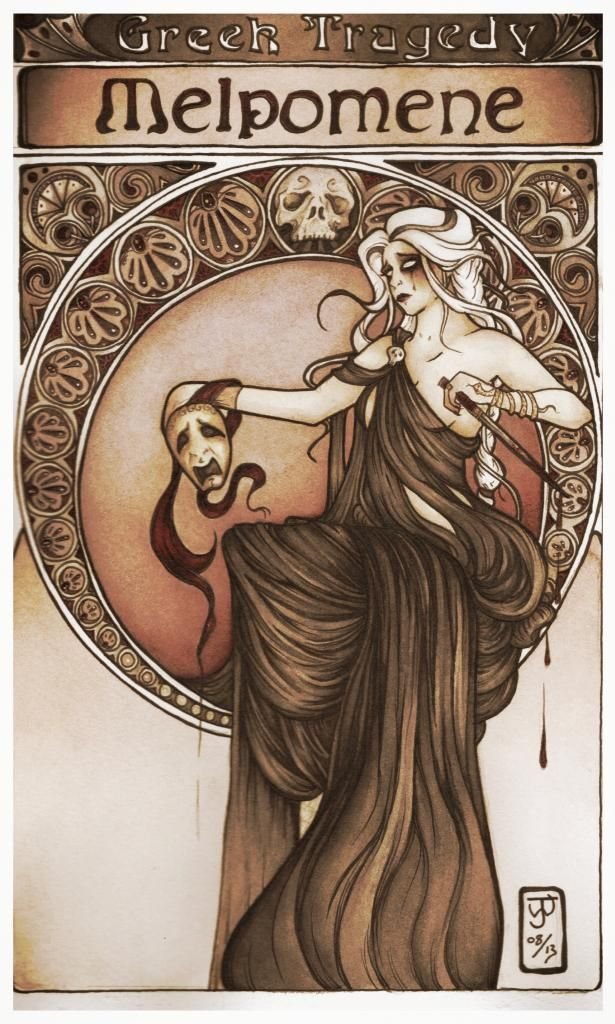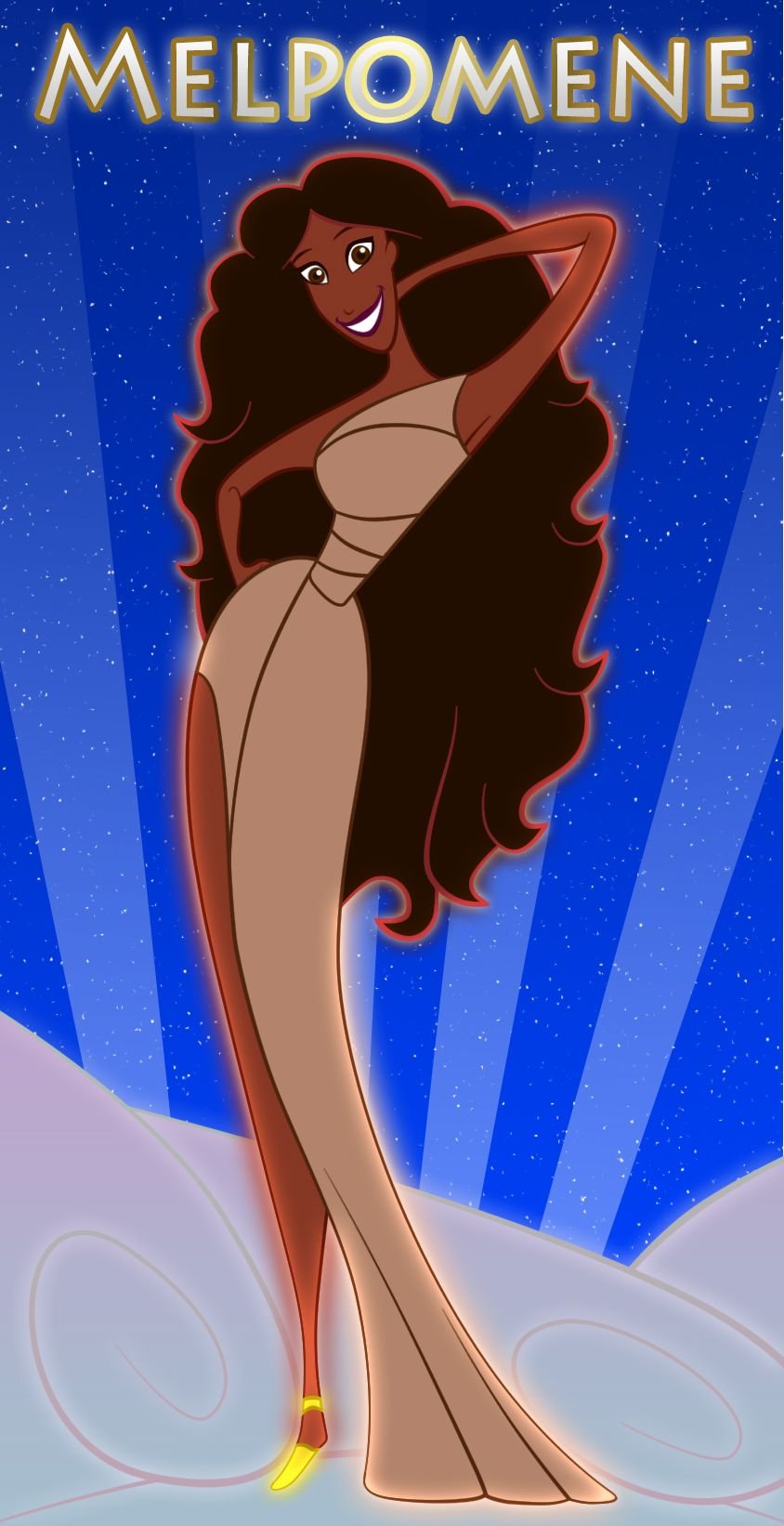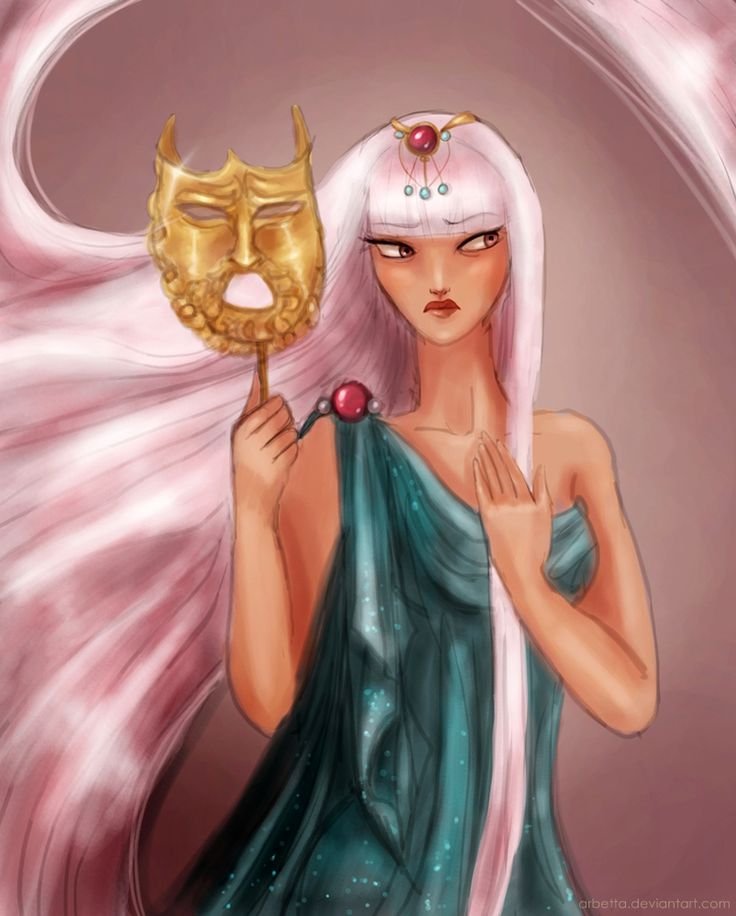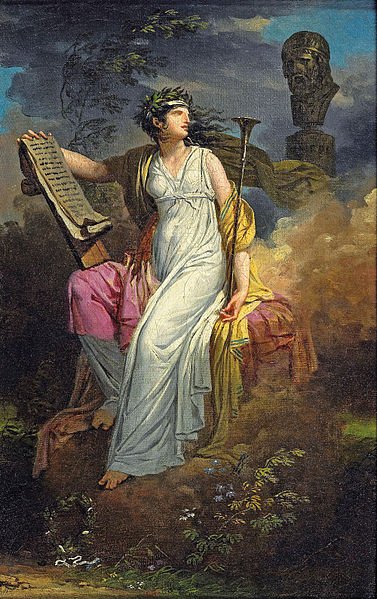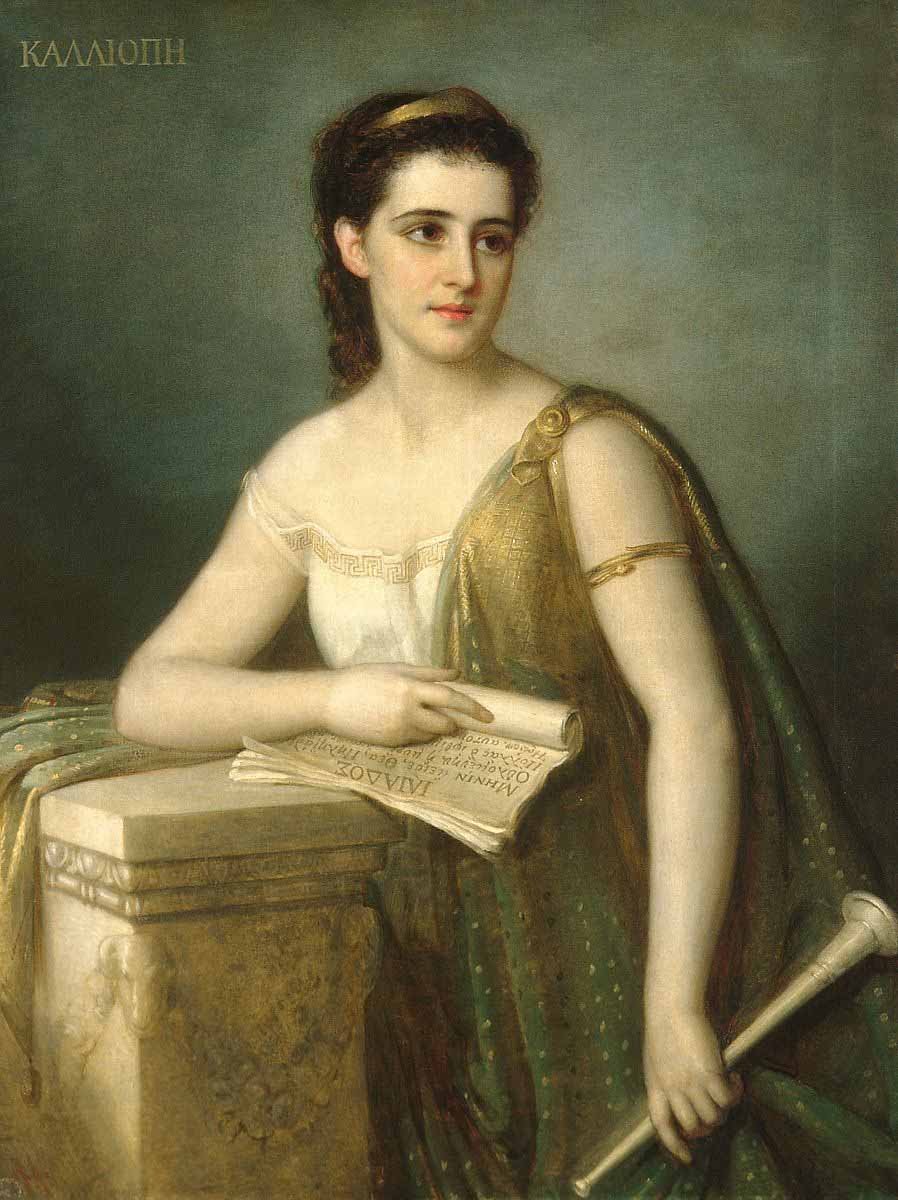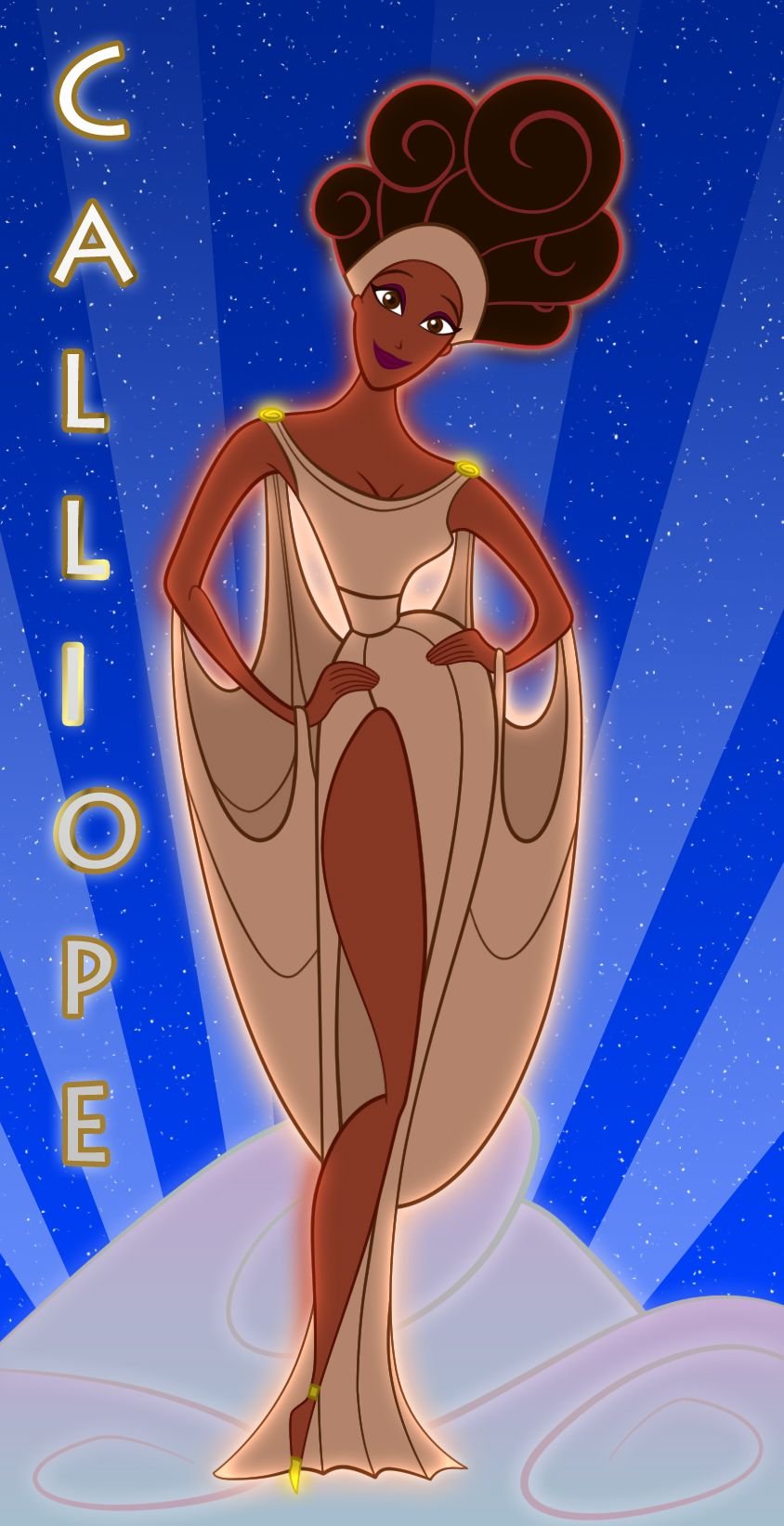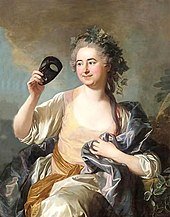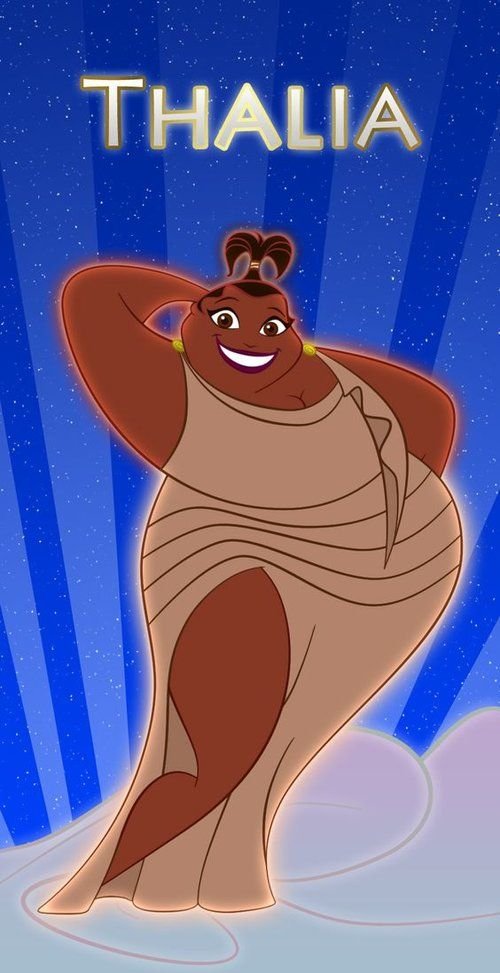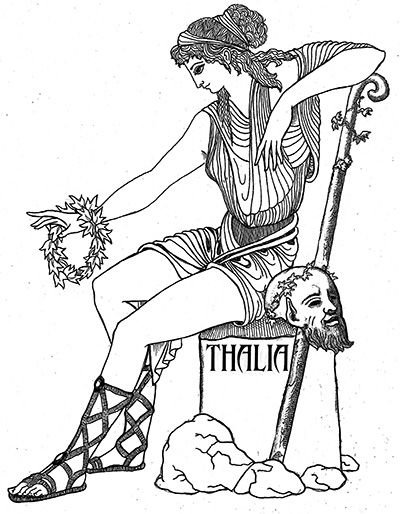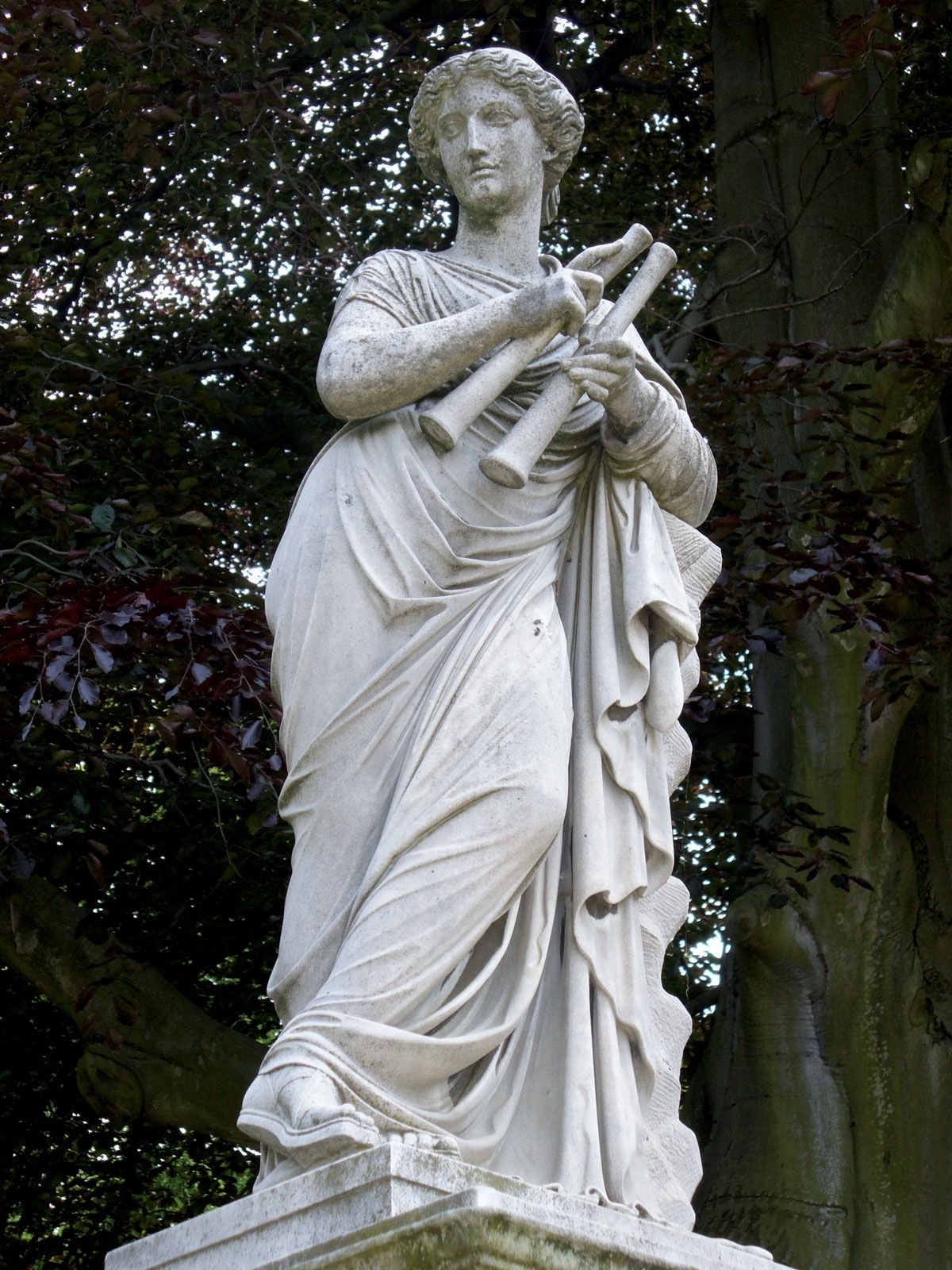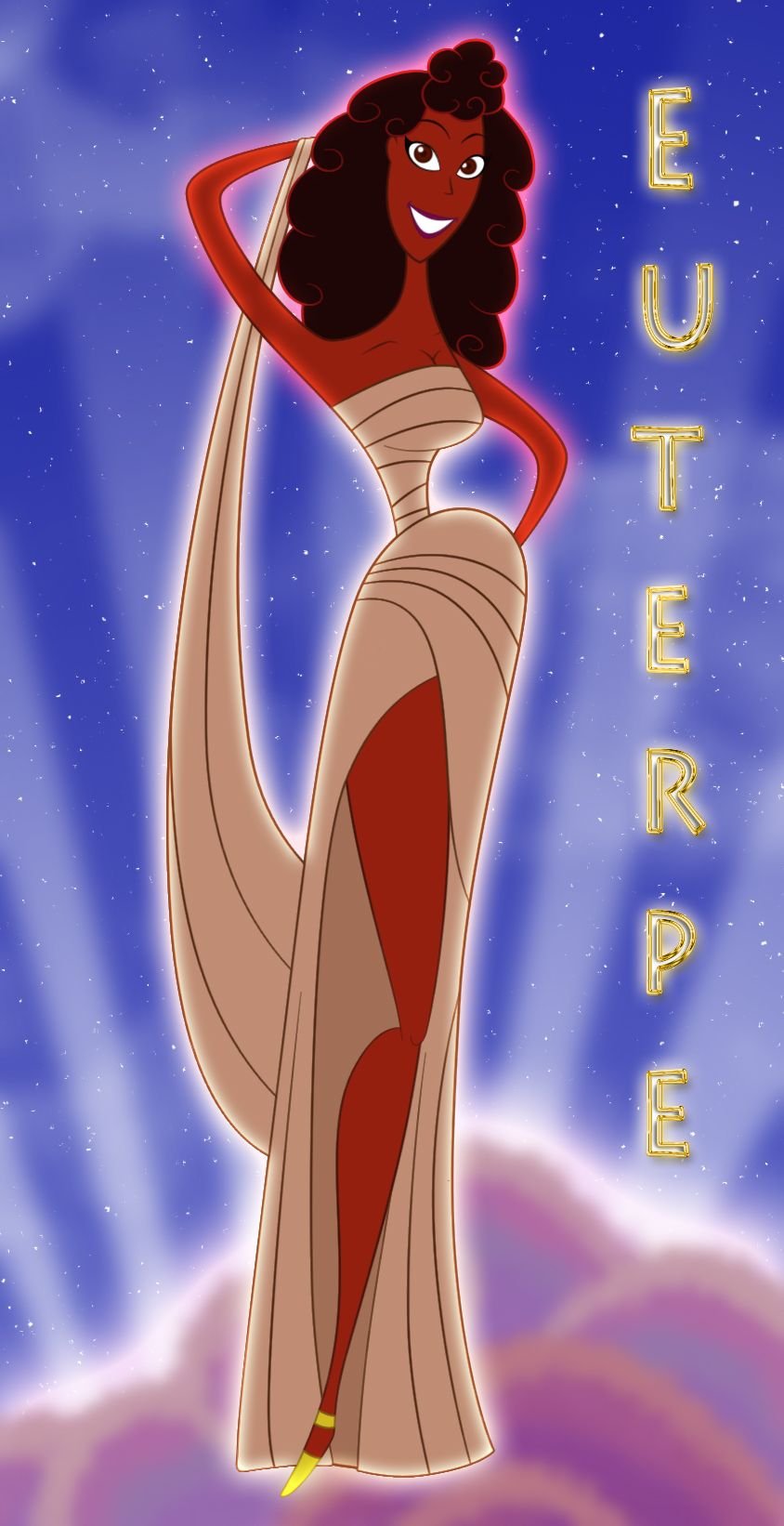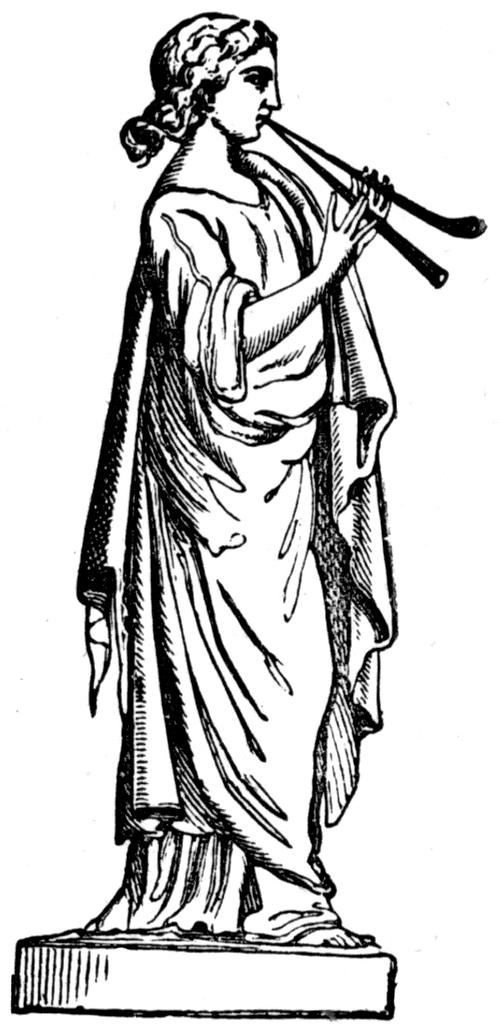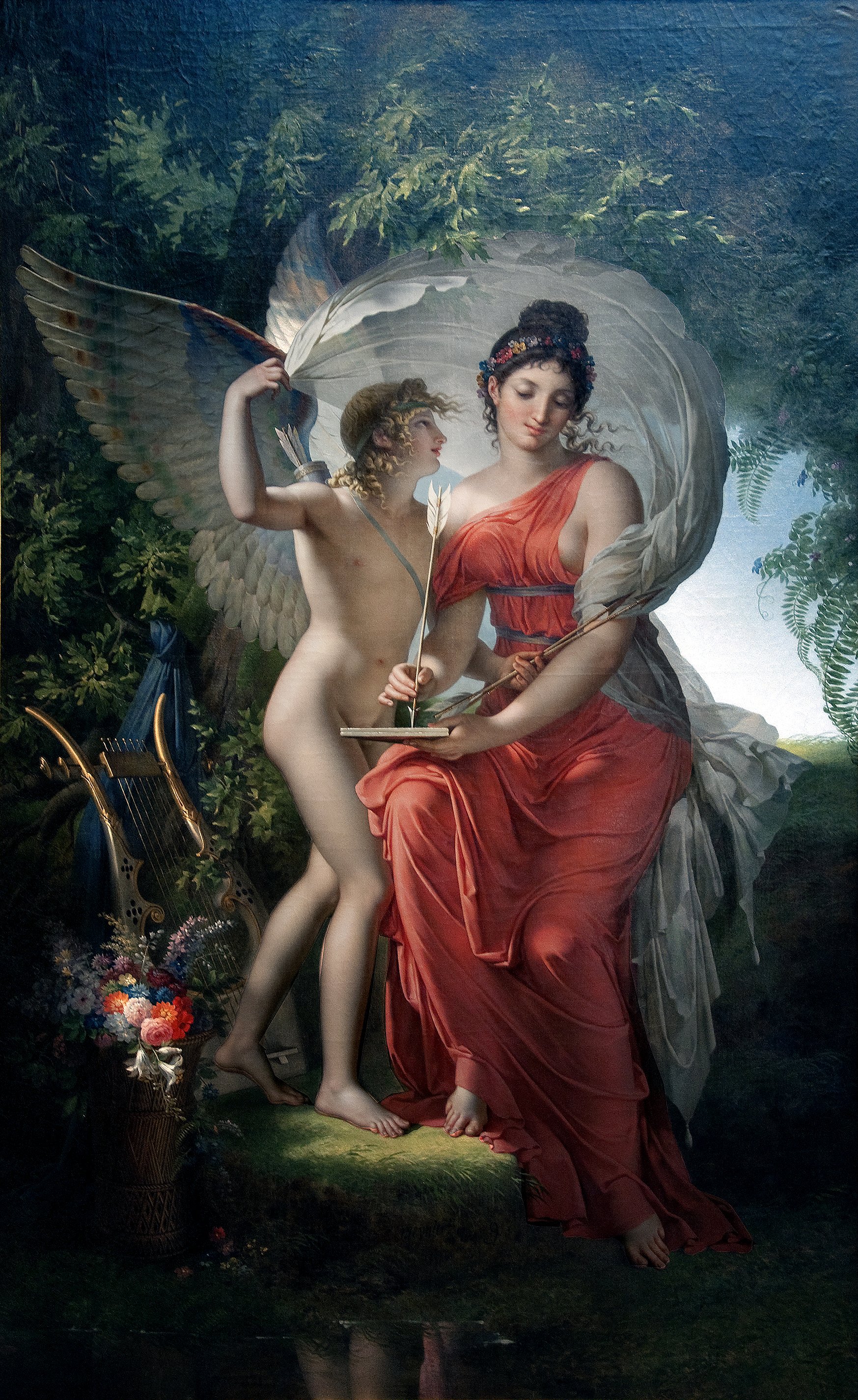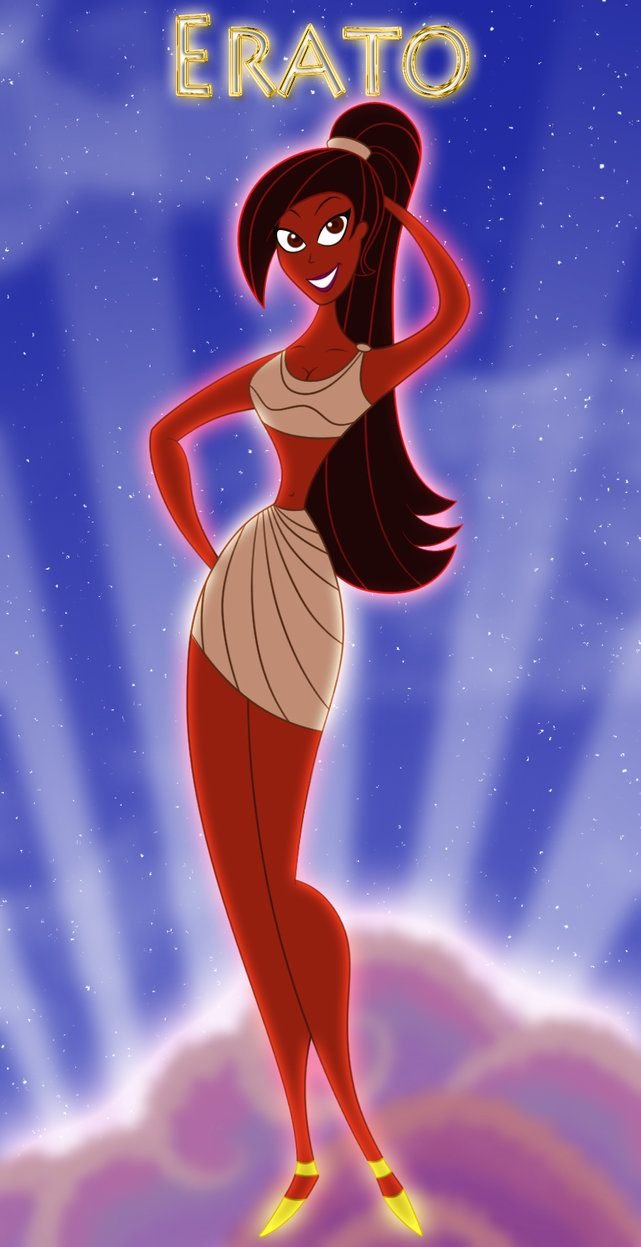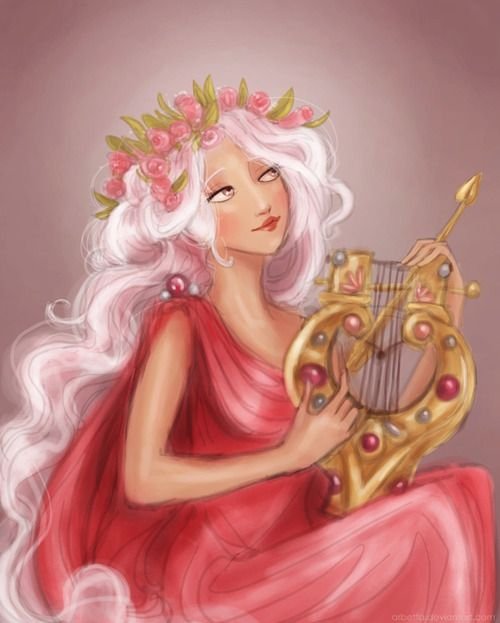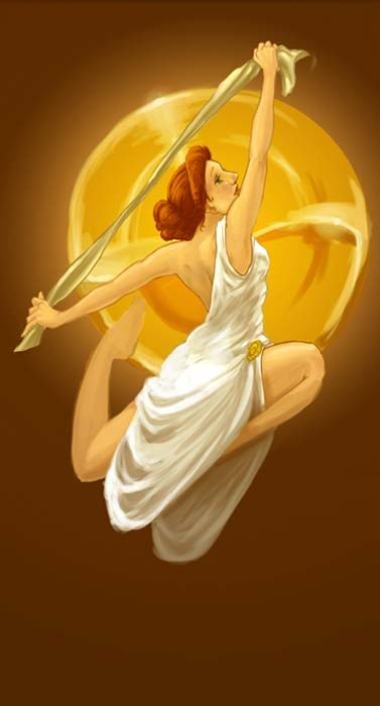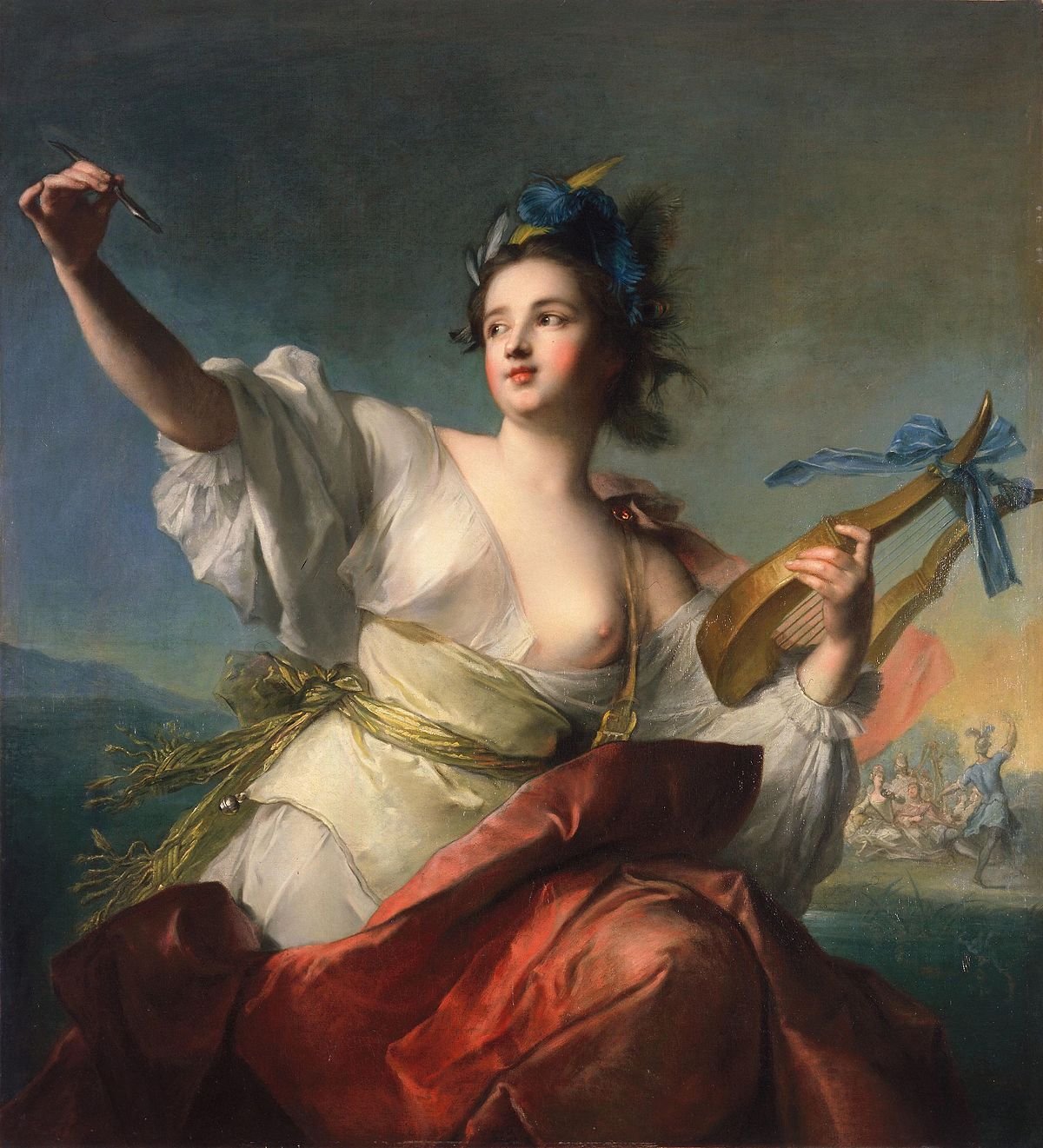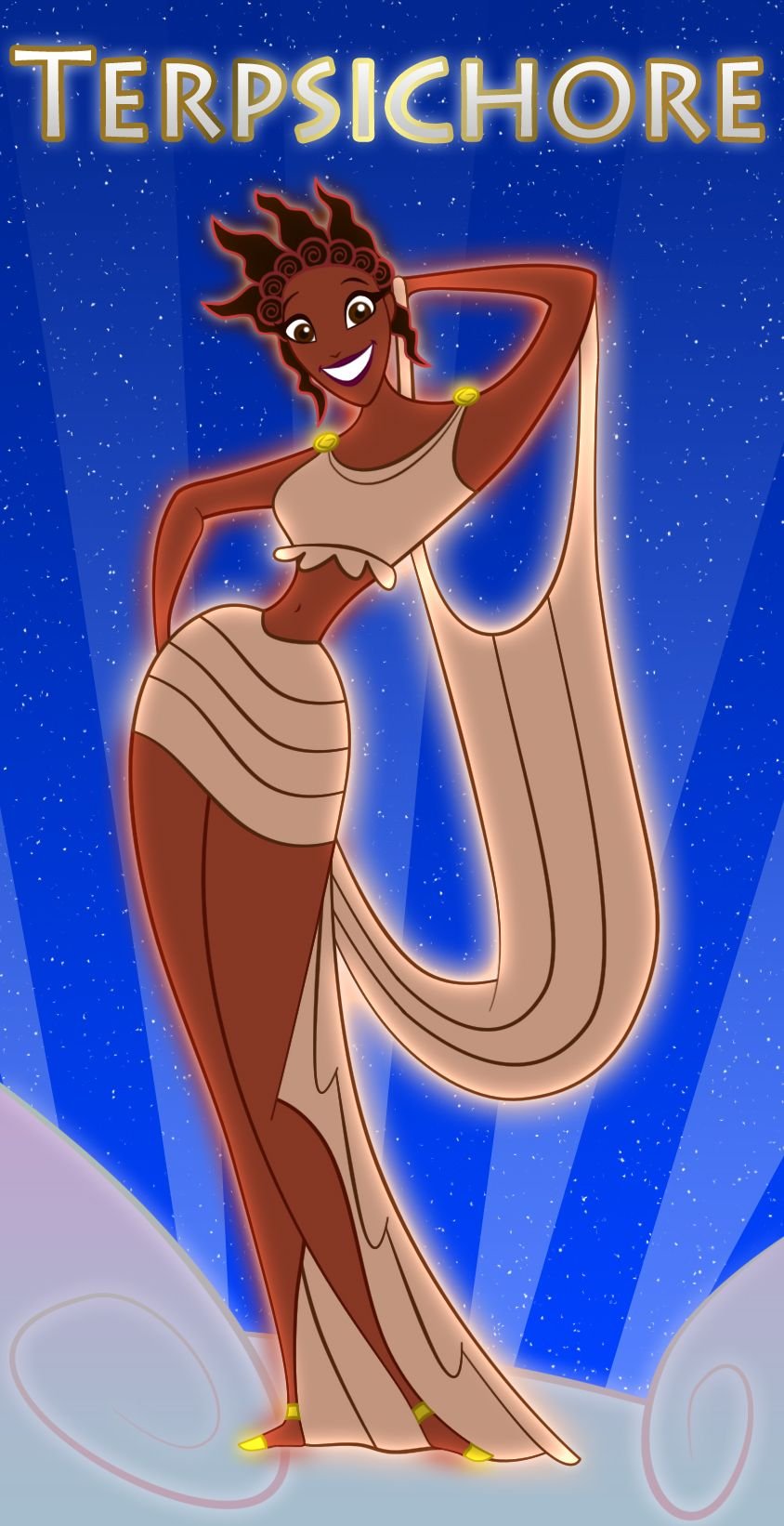The muses of xanadu
Each of the nine muses is a daughter of Zeus, the king of the gods, and the Titaness, Mnemosyne. Zeus is well known for having many children, mothered by people other than his wife, Hera. Zeus and Mnemosyne, a Titan, and an affair and the end result is that Mnemosyne gave birth to all nine of the muses. He slept with Mnemosyne for nine days in a row and the end result is that she became pregnant with all nine of the muses at once.
Mnemosyne - (m - naw - sy - nee) the goddess of memory. A Titaness, she was the daughter of Uranus (Heaven) and Gaea (Earth), and the mother (by Zeus) of the nine Muses.
clio (klahy-oh)
The Muse of History
Sometimes called the “Proclaimer”.
Her symbols include the scroll, books, or tablets.
She was considered the celebrator of history, of astonishing deeds and incredible accomplishments. She would proclaim them and recount the history of the heroes.
Clio was responsible for all of the knowledge that came from events, investigations and discoveries throughout history and it was her job to safeguard these.
Said to have aroused the anger of the goddess Aphrodite, when Clio had criticized the goddess of beauty for having fallen in love with Adonis. In retribution, Aphrodite would cause Clio to fall in love with a mortal, King Pierus of Pella.
Melpomene (mel-pom-uh-nay)
The Muse of Tragedy.
Initially the Muse of Singing, she then became the Muse of Tragedy, for which she is best known now.
Her name was derived from the Greek verb melpô or melpomai meaning "to celebrate with dance and song."
She is often represented with a tragic mask and wearing the cothurnus boots traditionally worn by tragic actors. Often, she also holds a knife or club in one hand and the tragic mask in the other.
When she first came into being, theater hadn’t been invented yet. She became the Muse of Tragedy during the classical period of Ancient Greece when theatre regularly featured tragic plays.
She was often associated with Dionysius and would often be depicted with them.
Thought to be the mother of the Sirens.
calliope (Kahl-lee-OH-pay)
The Muse of Epic Poetry and Eloquence
Normally depicted with a trumpet, a lyre or a writing tablet in her hand.
Said to be the muse who bestowed the gift of eloquence about mortal kings, coming to them when they were a baby, and anointing their lips in honey.
Considered to be the leader of the Muses, the wisest of the sisters, and also the most assertive.
Oldest of the Muses.
Mother of Orpheus.
As the Muse of epic poetry, people said that Homer was only able to write the Iliad and the Odyssey thanks to Calliope’s influence.
Thalia (thal-eeah)
The Muse of Comedy
Also known as the Muse of Idyllic or Pastoral Poetry.
Said to be the 8th born of the muses.
Usually portrayed as a beautiful and joyous young woman, wearing a crown made of ivy, with boots on her feet. She carries the comic mask in one hand and a shepherd’s staff in the other. Many sculptures of the goddess show her holding a trumpet and a bugle which were both instruments used to aid in the projection of the actors’ vocals.
Thalia’s inspiration made laughter emanate from the ancient theatres. She was also said to be responsible for the development of fine and liberal arts in Ancient Greece.
euterpe (yoo-tur-pay)
The Muse of Music.
Responsible for providing the inspiration for music, song, and lyric poetry.
She was always associated with the Aulos, a musical instrument popular in Ancient Greece that resembles a flute. The panpipes, another instrument, is also associated as her symbol.
In many depictions of her, she is often wearing a laurel wreath, which is also a symbol that is usually associated with her.
erato (ur-ra-tow)
The Muse of Lyric Poetry, Love Poetry, Erotic Poetry and Mime.
She is most often shown wearing a wreath that is made from myrtle and roses and is also considered to be both passionate and erotic. She is also rarely shown standing up and is most often seated in her pictures.
Said to have had the grace of Aphrodite.
Turtle doves are always at her feet, eating seeds. Turtle doves are one of the universal symbols of love.
Represents all writings that have to do with love, including love poetry, songs about love, and all topics related to love and marriage. Because of what she represents, she is also considered to be one of the most beautiful of all the muses, especially because it is said that her very appearance inspires these thoughts.
terpsichore (trp-si-kr-ee)
The Muse of dance and choral music.
In addition to dance, she has more recently been invoked as a metaphor for rhythm and ordered movement in the universe, such as mechanical oscillations.
She is still associated with dance today. This is reflected in the adjective terpsichorean which refers to things related to dance.
Terpsichore is also invoked in subjects beyond dance that have a sort of ordered movement or rhythm
She is now the Muse not just of human dance but also the cosmic dance in which the whole universe participates.




